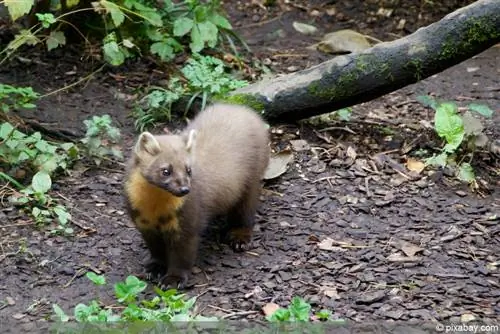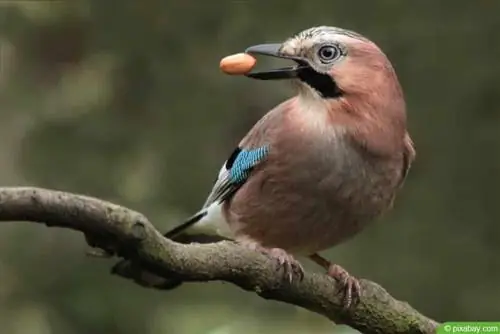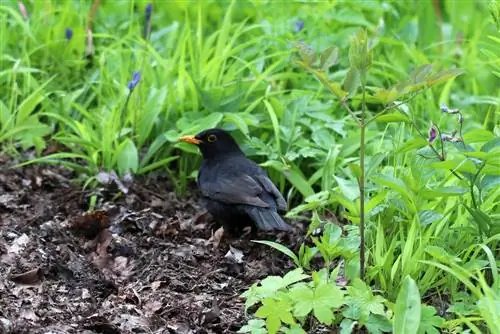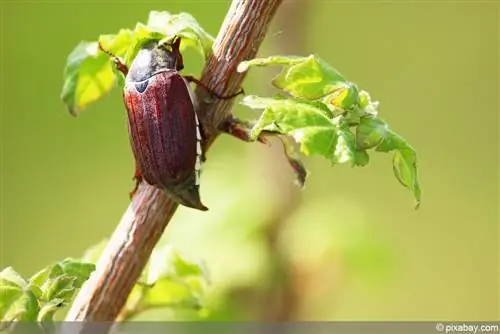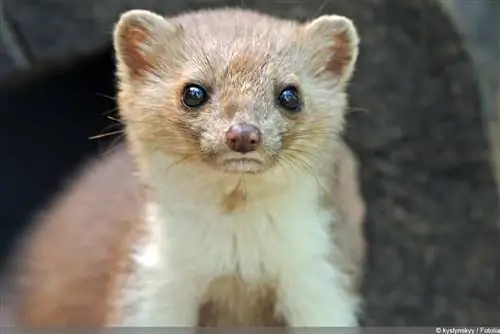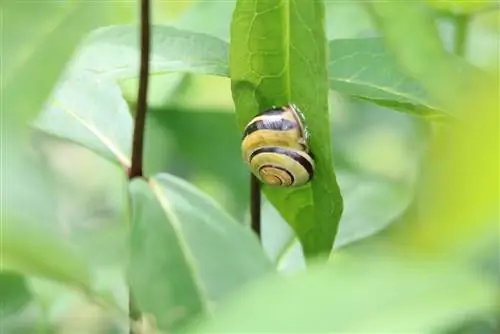- Author admin [email protected].
- Public 2023-12-17 03:39.
- Last modified 2025-10-04 22:41.
The treetops of large forest areas are its territory. The pine marten is considered the most brilliant acrobat among European mammals. We can only rarely admire its climbing skills because, unlike the stone marten, the shy forest dweller avoids being close to people. This profile familiarizes you with fascinating details about the noble marten. Read here how the little robber lives, what food he prefers and what natural enemies he has to fight against.
Profile: Pine Marten
- Genus Marten (Martes) within the family of dog-like predators
- Name of the species: Pine marten (Martes martes)
- Other name: Noble marten
- Area of distribution: contiguous forests in Europe and Western Asia up to the tree line
- Head-torso length: 45 to 58 cm (excluding the bushy tail)
- Tail length: 16 to 28 cm
- Weight: 800 to 1800 grams
- Fur color: chestnut to dark brown
- Typical characteristic: yellow, unforked throat patch (yellowthroat)
- Ears: short, triangular with thin, yellow edges
- Short legs with very hairy paws
- Strong set of teeth with 38 teeth
- Activity: mainly active at dusk and at night
- Life expectancy: up to 10 years in the wild, up to 16 years in captivity
The long, bushy tail serves as an organ of balance for the pine marten when it swings from branch to branch at a height of up to 10 meters. The furry acrobat jumps up to 4 meters long. The low body fat percentage, coupled with a slim shape, optimize the agile predator's climbing and jumping abilities. The forest dweller compensates for the lack of a thick layer of fat to insulate from the cold with an extra thick winter coat, which is why it gets its name from the noble marten. The silky winter fur made the pine marten a sought-after hunting victim for a long time. As a result, the beautiful fur bearer has become rare in many regions. In 2014 the noble marten was removed from the list of huntable species.
Diet and lifestyle
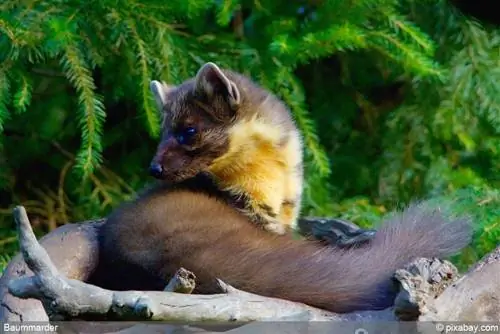
Pine martens are omnivores with a strong preference for small mammals, birds and eggs. The loners spend most of the day in one of their nests, which are located in tree hollows. Sometimes the clever forest dwellers convert an abandoned squirrel nest or an empty bird of prey nest into a living cave. As dusk begins, the robber goes looking for food in the forest, up and under the trees, always at a safe distance from people. This loot is on his menu:
- Birds and their eggs
- Mice of all kinds
- Frogs and small reptiles
- Squirrel
- Insects and snails
- Fruits and nuts
The noble marten kills prey with a targeted neck bite. He rarely eats his prey on site. Rather, the predator likes to transport its food to the next tree in order to eat some of it there in peace and deposit the remains. The pine marten creates various storage facilities for the cold season because it does not take a winter break. He doesn't have to be afraid of the harsh winter. Frosty temperatures reduce the flight distance of his preferred prey, so that in winter he can even reduce his territory by up to 50 percent without suffering from hunger.
Natural enemies
A natural animal enemy for the pine marten is primarily the fox. The wild dog is widespread in Europe and shares its habitat with the pine marten. Both predators are active at dusk and at night, so encounters are inevitable that do not end well for the smaller and lighter marten.
The pine marten is a highly sought-after prey for eagles and eagle owls. Nocturnal hunters, such as the lynx, also target unwary goldenthroats. However, these enemies have now become just as rare as the pine marten itself. This is why humans occupy the undisputed top position in the inglorious ranking of deadly adversaries. In earlier times, hunters were after the silky fur of the forest dweller. Today the marten lacks a habitat because contiguous forest areas are being destroyed by humans.
Reproduction and parental leave
Pine martens live as territorial solitary creatures. Males mark their territory with scent marks and defend it vehemently against competitors of the same sex. However, a male's territory often overlaps with that of several females. During the mating season (mating season) in midsummer, there is a lot of excitement in the treetops when the competing male dogs run around hissing and screaming in order to distinguish themselves from a female who is ready to mate as the perfect producer for the offspring.
The gestation period of a female lasts about 8 months because egg rest ensures that the 8 to 10 cm young see the light of day in spring. The 3 to 6 young animals are born blind and can see after 4 to 5 weeks. They leave the nest at the age of 8 weeks and are largely independent at 16 weeks. It is not uncommon for the offspring to stay with the mother until the following spring because female pine martens are ready to mate at intervals of 2 years.
Tip:
Pine martens are the cross-country skiers among the real martens. On their short legs they cover 5 to 8 kilometers on the ground in one night when the predators are on the hunt. If the food supply is limited, goldenthroats travel impressive 15 kilometers in search of a meal.
Distinct between pine marten and stone marten
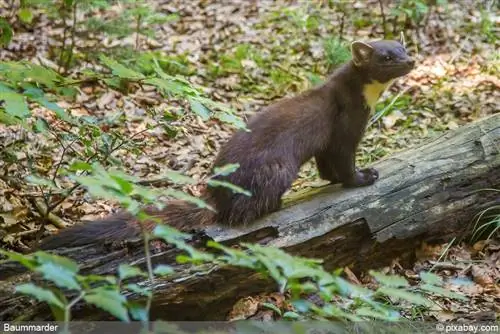
Due to their close relationship, pine martens and stone martens look very similar. Both species of martens differ significantly in terms of their way of life. Above all, the stone marten specifically seeks proximity to humans, which causes numerous conflicts. Many a costly engine failure is caused by the stone marten because it likes to nibble on cables. He also likes to hang out in attics and acts as a nocturnal poltergeist, depriving the human inhabitants of their sleep. You can distinguish between pine martens and stone martens using the following characteristics:
throat spot
- Pine marten: yellow and unforked
- Beech marten: white and divided into a double fork
Height and weight
- Pine marten: 80 to 85 cm long, weighing 800 to 1,800 grams
- Beech marten: 40 to 75 cm long, weighing 1,100 to 2,300 grams
Nose
- Pine marten: dark
- Beech marten: light to pink
Paws
- Pine marten: very hairy
- Beech marten: no hair
Obviously both species of martens avoid each other, as no crossbreeding has occurred so far. Pine martens and stone martens are therefore considered a shining example of evolution, how related predators divide up their habitat in order to avoid destructive competition for food.

